Once I had arrived at the Nimatighat port I was met by Julius. Julius was in his late 70s and owner of the Nandan Guesthouse in Jorhat, where I was booked to stay. I immediately liked him and we drove to Jorhat in his new Tata car driven by his driver.
Julius was an interesting man
. A retired tea plantation owner, he was also a former tea scientist and had grown up in the town of Sibsager (pronounced sheep shagger - strangely), the seat of the former King of Assam, the Ahom. A descendent of these royal people he was quick to point out that his heritage owed more to Thailand than to mainland India and went on to detail how the Ahoms were eventually assimilated into Indian and assumed Indian cultural life and religious beliefs. They lost their Taoist beliefs in the 15th century, becoming Hindus.
He was also an immensely liable man and very much a British-phile attributing great benefits to the period of British rule and lamenting their departure. He was quick to offer a colonial building tour of Jorhat and gave me a run down of various British governors and other dignitaries. He was also quite honest saying that he had sold his tea plantation near Kaziranga when he retired and when he realised that his son was going to become an army doctor
. He went onto add that, “I am not sure what to do in my retirement. My son has tried to help by developing a guesthouse in our home, but I am still unfulfilled.”
He lived in the upmarket area of Jorhat, Club Road. It was a stones throw away from the Jorhat Gymkhana Club established in 1876. This suburb avoided the building site appearance of downtown Jorhat with its haphazard buildings, dust, dirt and piles of rubbish. This area was on the whole much cleaner (India clean) with good roads, large houses and a community. “Most of us here are retired,” Julius added.
It transpired that a 4.15 everyday he went for a walk around the local suburb or into the Gymkhana Club itself and was mightily keen for me to join him. These walks turned out to be in essence “guided walks” of the local community and Julius would take time to explain all the historical sights, the community buildings and introduce me to former tea colleagues
. The real highlight was the visit to the large, very colonial Gymkhana Club, complete with huge clubhouse, apparently 18 hole golf course (Julius told me it was 22 hole), two cricket pitches, disused swimming pool, weekend cinema, athletics track and annual horse racing Gymkhana - unfortunately missed by two weeks.
All of this was member managed, well kept and a very interesting slice of colonial history. The clubhouse had some interesting photographs of the Gymkhana in the 19th century complete with president’s boards, creaky art deco furniture and fixtures plus a completely deserted bar. Occasionally we bumped into golfers during these afternoon strolls. Usually the golfers were just practicing and it was then the green flags were placed in the holes. “The flags can get stolen if they are left out” Julius added. Most of the time Julius and I tried to work out which the tees served which greens.
On some of these afternoon walks we were accompanied by one of Julius’s friends, but mostly we were on our own. The guesthouse itself was excellent. Julius and his wife had the ground floor but upstairs he had two flats. One was rented out to some students, whom I did not meet until the last day. They had no furniture, just slept on the floor played loud hypnotic music and seemed to indulge in strange substances
. The flat I was in was a self contained guesthouse, with studio bedroom and kitchen, a big bathroom and a washing machine. Even the wifi was fast and worked well - the first for over two months. The only downside was that it was self catering. Ordinarily I would prefer to eat in, but am happy to eat out. However as all restaurants were some distance away and closed on Sundays, take away fast food became the only option and something which is usually disappointing. Nevertheless the small kitchen is well equipped. Other than that it was one of the nice, most comfortable places I have stayed on this trip.
Arriving on Friday night did not give me much of an option to see anything on that day. On the Saturday I was hoping to the Gibbons at the Holing Park Sanctuary and Julius recommended a visit to a nearby tea plantation. Unfortunately Sunday was not going to be so interesting as everything was shut and I was not expected in Tinsukia until Monday
.
Julius kindly let me use his car for a very generous low amount of money and then offered to accompany me to the Holing Park Sanctuary on the Saturday. Unfortunately the driver overslept and was an hour late to the agreed meeting place so we did not arrive until 8.30am.
Once in the park, the Sanctuary Ranger informed me that the State Government had increased the Camera taxes (a charge applied to each visitor of a national park or monument) from R50 - 500. This was substantial, the same amount almost as the entire entry fee to the Taj Mahal. This of course only applied to foreigners. I was not sure I believed this, so he produced an official looking black & white fax wherein the R50 foreigner charge had been crossed out with a blue pen and 500 had been entered without any authorising signature. This looked suspicious and when I confronted the official (actually he claimed he was an official, but was dressed like a road cleaner with no proof of identity) he just became indifferent. I erupted in anger and accused him of being a thief.
A standoff ensued with Julius standing bemused in the middle of this exchange. The so called official sat there impassively and just insisted on payment, yet still did not seem to understand why I was angry. He then suggested I should go and speak with the other “English tourists in the park who have paid the entry fee - without problem. Again this incensed me. These tourists were in fact a “BBC film camera crew,” obviously being reimbursed from their pockets so they would not care what they paid. In fact no two week package tourist understands the necessity of fighting too keep within your budget and getting a fair price (paying what the locals pay). These type of tourists invariably cause the problems for us independent travellers. However this, to my mind was a simple case of fraud and theft.
Eventually a research student came over to the offices and confirmed that the Assamese government had raised their camera tax to almost parity with the total Taj Mahal entrance fee. This new policy ensures that Assam is now a lot more expensive than it was when I visited in 2013. Julius asked me what I wanted to do and in the end, rather than waste the transport money - I agreed to visit and pay. However I still had my reservations that this fraudulently altered document was really only lining the pocket of the insolent official at the desk. I never have a problem of paying to enter a wildlife park, if the money goes to that park. In India of course it rarely if ever appears too and most people are aware that it only goes towards government perks, cars and homes. I was assigned two guides (both of whom had witnessed the fracas) and they both told me I was right to be skeptical about the altered document. However once inside the forest I did eventually forget about this.
Fifty metres from the entrance were a couple of tourist rest houses and in front of one of these were arranged the BBC camera crew pointing at the tree tops. Quickly I found myself completely mesmerised by the scene above them, some 30-40m up as three Hoolock Gibbons sat in the tree tops. They just nonchalantly watched the scene below as cameras were moved into position and people excited talked in hush tones. The female was quite brown with the telltale white markings like large spectacles around her eyes. She had a youngster with her and a male who where both jet black with the same white facial markings. These two were active and the adult male appeared quite smaller. They exist only in family groups and are most active in the morning. Like in Madagascar with the Indris and in the Amazon with the Red Howlers their calls are amazing and here it happened almost on cue at 9.00am. The Hillock Gibbon is the only Ape in India and spends all its life in the tree tops. Threatened by habitat loss, the Holing Park Sanctuary (which was established by the British) is one of the best places to spot these animals.
No sooner had we all got the cameras out but the family went on the move swinging through the tree tops and this afforded some great photos (albeit high in the tree tops) as they swung over the pathway. Our group moved off, while Julius elected to stay with the car. As we went further in to the forest, I started to understand why this place is so special. The forest itself stands out as you approach it from the rice paddies and agricultural fields which surround it. Virgin forest, it contains many animals, although as the forest is particularly dense few are likely to be spotted. We did hear a Giant Hornbill, but alas did not spot one. As we trekked further into the dense forest the sounds grew louder and were amazing. We passed unusual towers of mud, made by a very large earthworms plus piles of salt left on banana leaves for the forest elephants by the forest staff. Later we spotted a Giant Squirrel running along the tree branches. All the time we could hear the cries of the gibbons some in the distance, some quite close. Luckily we did spot a group of Pig Tailed Macaques (who enjoyed posing) and an altogether more camera shy group of rare Capped Langurs. However as expected it was the Gibbons who stole the morning.
Back with Julius at the car, we went off to enjoy some breakfast strangely at a restaurant where I had stopped last year in a Sumo when traveling from Mokokchong to Mon in Nagaland. Julius was then all fired up to take me to a tea plantation, although he did add (as we drove through the gates) “of course there is nothing much happening this time of year as its the winter.” It was nevertheless interesting if a bit quiet. All the machinery was being repaired and the main site looked like a building works rather than a tea plantation with all the work going on.
Back in Jorhart I was keen to start on the internet and get some clothes repaired in town. The following day was Sunday, so there was little to do except the afternoon walks and the internet. I did have an accident and managed to melt Julius’s kettle, but he took it in his stride and I gave the money for a replacement. It was on that Sunday when I realised that his name was not Julius but actually Suresh Gogoi. Nothing like Julius and made realise that he was not hard of hearing - rather embarrassingly.
All said and done this guest house was fabulous. Suresh was the most helpful and friendly host and I hope I will have the opportunity to come back, one day. The next morning he kindly gave me a lift to the bus station.
Julius, Gibbons, Park Fees, Tea & Gymkhana
Thursday, February 05, 2015
 Jorhat, Assam, India
Jorhat, Assam, India
Other Entries
-
85Skulls, Fertility, Opium, Anghs, Warriors
Nov 1780 days prior Shengnya, Indiaphoto_camera5videocam 0comment 0
Shengnya, Indiaphoto_camera5videocam 0comment 0 -
86Elders, Changs, Culture, Families and Skulls
Nov 2275 days prior Tuensang, Indiaphoto_camera5videocam 0comment 0
Tuensang, Indiaphoto_camera5videocam 0comment 0 -
87Sangai Festival - Kang, Hockey/Wrestling, Polo etc
Nov 2869 days prior Imphal, Indiaphoto_camera5videocam 0comment 0
Imphal, Indiaphoto_camera5videocam 0comment 0 -
88Hornbill Festival, Loin Looms & Naga Culture
Dec 1057 days prior Kohima, Indiaphoto_camera10videocam 0comment 0
Kohima, Indiaphoto_camera10videocam 0comment 0 -
89Birds, Rubbish, Grasslands, Rubble, Tribes etc
Dec 1453 days prior Nakhatrana , Indiaphoto_camera5videocam 0comment 0
Nakhatrana , Indiaphoto_camera5videocam 0comment 0 -
90Embroidery, Rogan, Block Printing, Tribes
Dec 1750 days prior Bhuj, Indiaphoto_camera5videocam 0comment 0
Bhuj, Indiaphoto_camera5videocam 0comment 0 -
91Lions, Nitin, Bird Spotting, Sleeper Bus Part 1
Dec 2146 days prior Gir, Indiaphoto_camera6videocam 0comment 0
Gir, Indiaphoto_camera6videocam 0comment 0 -
92Island Life, Portuguese Colony, Christmas
Dec 2542 days prior Diu, Indiaphoto_camera4videocam 0comment 0
Diu, Indiaphoto_camera4videocam 0comment 0 -
93Restaurant Tombs, Mosques, Markets
Dec 2839 days prior Ahmedabad, Indiaphoto_camera5videocam 0comment 0
Ahmedabad, Indiaphoto_camera5videocam 0comment 0 -
94Birds, NYE, Dhows, Feral Dogs, Shaves
Dec 3136 days prior Mandvi, Indiaphoto_camera6videocam 0comment 0
Mandvi, Indiaphoto_camera6videocam 0comment 0 -
95Blue Moon, Salt Flats, Crafts
Jan 0234 days prior Bhujodi, Indiaphoto_camera5videocam 0comment 0
Bhujodi, Indiaphoto_camera5videocam 0comment 0 -
96Calico Musuem, Festival Prep, Street Life
Jan 0630 days prior Ahmedabad, Indiaphoto_camera5videocam 0comment 0
Ahmedabad, Indiaphoto_camera5videocam 0comment 0 -
97Leopards, Shepherds, Turbans and Aristocrats
Jan 1125 days prior Bhenswara, Indiaphoto_camera5videocam 0comment 0
Bhenswara, Indiaphoto_camera5videocam 0comment 0 -
98Birds, Fog, Bad Internet, Old Friends
Jan 1422 days prior Jodhpur, Indiaphoto_camera7videocam 0comment 0
Jodhpur, Indiaphoto_camera7videocam 0comment 0 -
99Tigers Tigers Tigers Tigers and oh Tigers
Jan 1719 days prior Sawai Madhopur, Indiaphoto_camera6videocam 0comment 0
Sawai Madhopur, Indiaphoto_camera6videocam 0comment 0 -
100Trains, Rodents, Rip offs, Delhi and Gentle
Jan 2511 days prior Delhi, Indiaphoto_camera3videocam 0comment 0
Delhi, Indiaphoto_camera3videocam 0comment 0 -
101Sand, Masks, Forest Man, Monks & Bamboo
Feb 023 days prior Majuli, Indiaphoto_camera8videocam 0comment 0
Majuli, Indiaphoto_camera8videocam 0comment 0 -
102Julius, Gibbons, Park Fees, Tea & Gymkhana
Feb 05 Jorhat, Indiaphoto_camera5videocam 0comment 0
Jorhat, Indiaphoto_camera5videocam 0comment 0 -
103Houseboats, Dolphins, Rain and Animal Planet
Feb 105 days later Tinsukia, Indiaphoto_camera5videocam 0comment 0
Tinsukia, Indiaphoto_camera5videocam 0comment 0 -
104Tezu family home, TV Mike, Huts, Cows, River Wash
Feb 149 days later Tezu, Indiaphoto_camera5videocam 0comment 0
Tezu, Indiaphoto_camera5videocam 0comment 0 -
105Sumos, Boulders, Oranges, Idu Mishmi
Feb 1712 days later Roing, Indiaphoto_camera5videocam 0comment 0
Roing, Indiaphoto_camera5videocam 0comment 0 -
106Motorbikes, Idu Mishmi, Hats, Illness, Scenary
Feb 1914 days later Anini, Indiaphoto_camera9videocam 0comment 0
Anini, Indiaphoto_camera9videocam 0comment 0 -
107Nyokum Yullo, Nishi people, ferries, chain dance
Feb 2217 days later Itanagar, Indiaphoto_camera5videocam 0comment 0
Itanagar, Indiaphoto_camera5videocam 0comment 0 -
108Paddies, Plugs, Tattoos, Weddings, Bamboo, Spirits
Feb 2419 days later Ziro, Indiaphoto_camera5videocam 0comment 0
Ziro, Indiaphoto_camera5videocam 0comment 0 -
109Post Office, Hari's Help, Tourist Apartheid
Mar 0124 days later Guwahati, Indiaphoto_camera3videocam 0comment 0
Guwahati, Indiaphoto_camera3videocam 0comment 0 -
110Hornbills, Eco Lodge, Birds, Elephants & Nameri NP
Mar 0326 days later Tezpur, Indiaphoto_camera5videocam 0comment 0
Tezpur, Indiaphoto_camera5videocam 0comment 0 -
111Plans Changing, Bus tyres, early closing museums
Mar 0831 days later Kohima, Indiaphoto_camera2videocam 0comment 0
Kohima, Indiaphoto_camera2videocam 0comment 0 -
112Wildlife, History, Bad Roads, Elephants & Dust
Mar 1336 days later Wokha, Indiaphoto_camera5videocam 0comment 0
Wokha, Indiaphoto_camera5videocam 0comment 0 -
113Wedding, More Dust, Shawls, Tensions and Sumi Food
Mar 2043 days later Zunheboto, Indiaphoto_camera3videocam 0comment 0
Zunheboto, Indiaphoto_camera3videocam 0comment 0 -
114Stones, Inventions, Old Friends and Shop 65
Mar 2447 days later Mokokchung, Indiaphoto_camera5videocam 0comment 0
Mokokchung, Indiaphoto_camera5videocam 0comment 0 -
115Meeting Mr Sosangtemba Longkumer Ao
Mar 2649 days later Longsa, Indiaphoto_camera4videocam 0comment 0
Longsa, Indiaphoto_camera4videocam 0comment 0 -
116Expensive Transport, Rain, Football, Cockroaches
Mar 2851 days later Longleng Nagaland, Indiaphoto_camera3videocam 0comment 0
Longleng Nagaland, Indiaphoto_camera3videocam 0comment 0 -
117Pork, Pigs, Moon Singing, Monsoon, Footy
Apr 0155 days later Wakching, Indiaphoto_camera10videocam 0comment 0
Wakching, Indiaphoto_camera10videocam 0comment 0 -
118Aoling Festival, Rain, Easter, Rain, Rain
Apr 0660 days later Wakching, Indiaphoto_camera10videocam 0comment 0
Wakching, Indiaphoto_camera10videocam 0comment 0 -
119The Not Super Travel Co, Tea, Temples & Bye Byes
Apr 1064 days later Kamakhya, Indiaphoto_camera5videocam 0comment 0
Kamakhya, Indiaphoto_camera5videocam 0comment 0 -
12035c, Haveli, Pink City, Amber Fort, Tigers, Tigers
Apr 1569 days later Sawai Madhopur, Indiaphoto_camera5videocam 0comment 0
Sawai Madhopur, Indiaphoto_camera5videocam 0comment 0

 Jorhat, Assam, India
Jorhat, Assam, India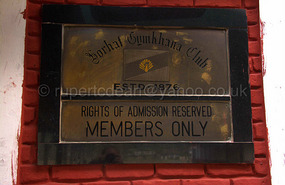
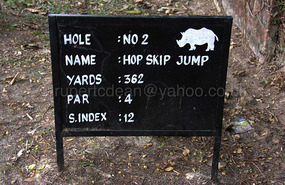
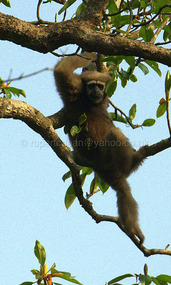
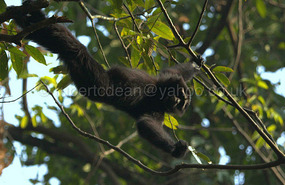
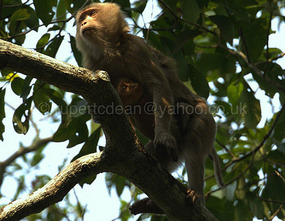

2025-05-22